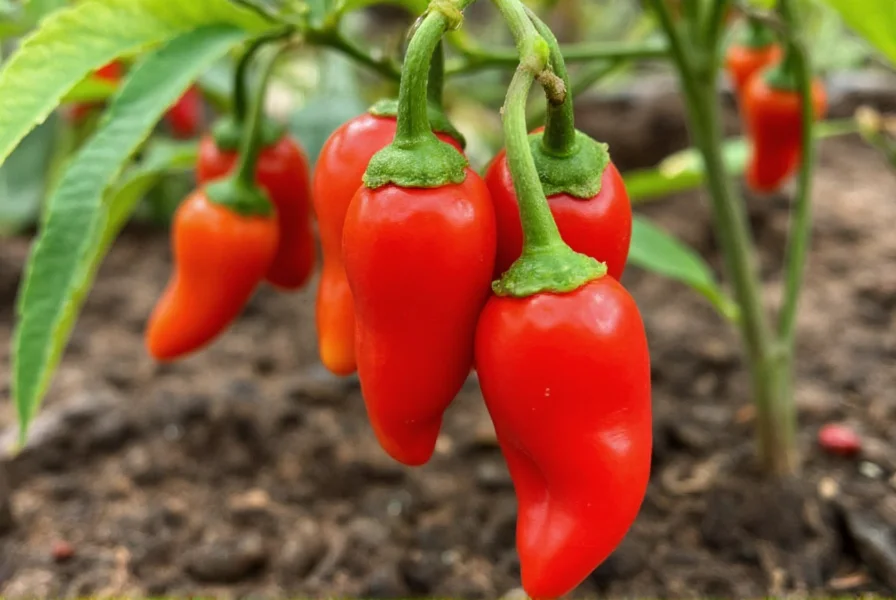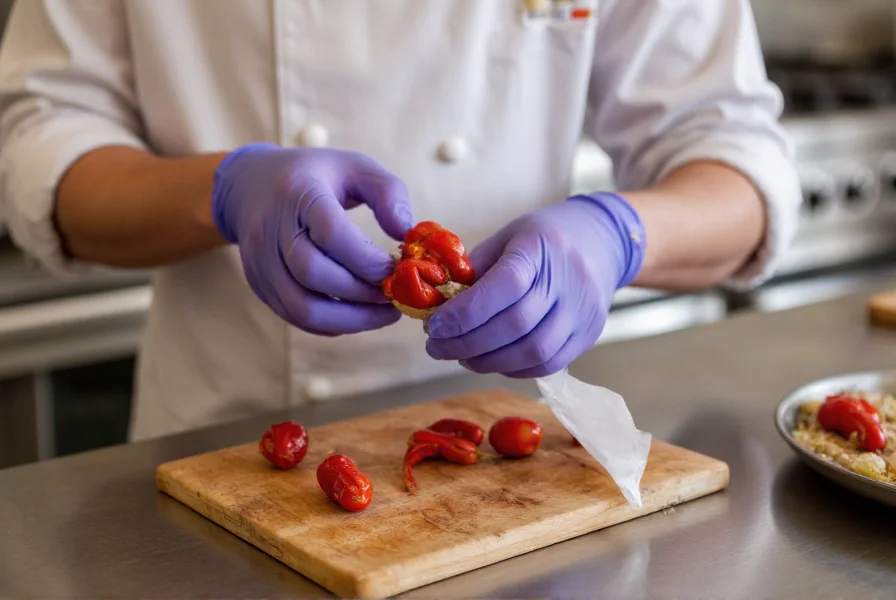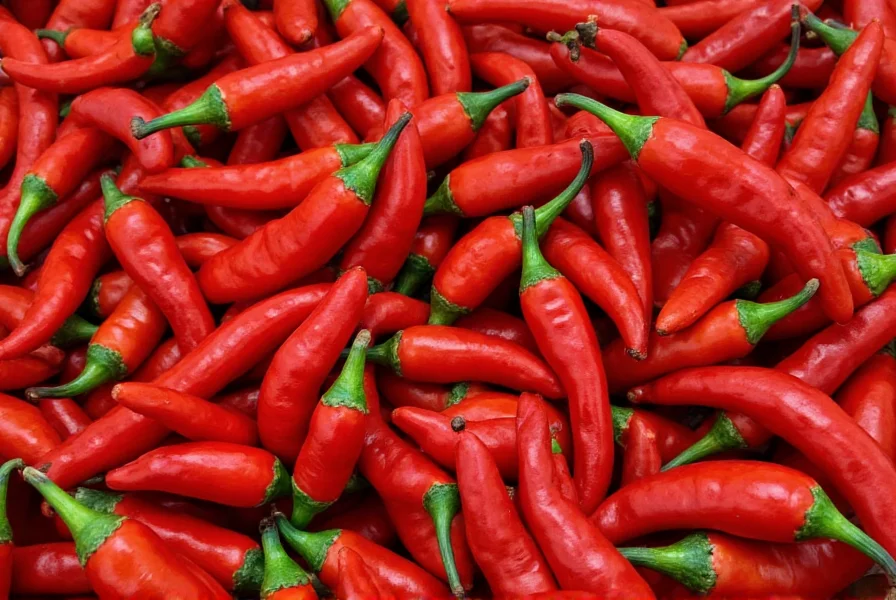The Trinidad Scorpion pepper represents one of nature's most formidable creations in the chili pepper world. Originating from Trinidad and Tobago, this cultivar belongs to the Capsicum chinense species and has earned its fearsome reputation through consistently high heat measurements on the Scoville scale.
Understanding the Scoville Scale Measurement
Developed by pharmacist Wilbur Scoville in 1912, the Scoville Organoleptic Test originally measured capsaicin concentration through human taste panels. Modern laboratories now use High-Performance Liquid Chromatography (HPLC) to provide more accurate measurements, though results are still converted to Scoville Heat Units for public understanding.
When discussing the trinidad scorpion pepper scoville scale rating, it's important to recognize natural variations. Environmental factors including soil composition, climate conditions, and cultivation practices can cause fluctuations within the established range of 1.2-2 million SHU. Some exceptionally hot specimens have even registered measurements approaching 2 million SHU.
| Pepper Variety | Scoville Heat Units (SHU) | Heat Comparison |
|---|---|---|
| Trinidad Scorpion | 1,200,000-2,000,000 | 300-400x hotter than jalapeño |
| Carolina Reaper | 1,400,000-2,200,000 | Slightly hotter on average |
| Habanero | 100,000-350,000 | 4-12x milder |
| Jalapeño | 2,500-8,000 | 150-480x milder |
Physical Characteristics and Varieties
The Trinidad Scorpion pepper typically grows to 1.5-2 inches in length with a distinctive "scorpion tail" shape at the stem end. Its color matures from green to vibrant red, though yellow and chocolate varieties also exist. The thin walls and small size belie the intense heat contained within.
Several recognized varieties include:
- Trinidad Moruga Scorpion - Often considered the hottest variety
- Trinidad Scorpion Butch T - Named after the Australian chili grower who cultivated it
- Trinidad Scorpion Bhut Jolokia - A hybrid variety

Safety Considerations When Handling Trinidad Scorpion Peppers
Working with peppers at this heat level requires serious precautions. The capsaicin concentration in trinidad scorpion pepper scoville scale measurements indicates potential health risks:
- Always wear nitrile gloves when handling
- Avoid contact with eyes, face, or sensitive skin areas
- Work in well-ventilated areas to prevent inhalation of capsaicin particles
- Have dairy products (milk, yogurt) nearby to neutralize accidental exposure
- Never use plastic gloves as capsaicin can penetrate them
Consumption of Trinidad Scorpion peppers should be approached with extreme caution. Even experienced chili enthusiasts often experience intense physical reactions including sweating, shaking, and temporary breathing difficulties. The trinidad scorpion pepper heat level exceeds what most people can comfortably tolerate.
Culinary Applications and Flavor Profile
Despite its fearsome reputation, the Trinidad Scorpion offers more than just heat. It possesses a complex flavor profile with fruity, citrusy notes that balance its intense spiciness. Chefs use it sparingly in:
- Hot sauces requiring extreme heat
- Specialty rubs for meats
- Pepper-infused oils (used in minute quantities)
- Caribbean cuisine where authenticity demands extreme heat
When using Trinidad Scorpion peppers in cooking, remember that a single drop of infused oil or a tiny piece of pepper can transform an entire dish. The how hot is trinidad scorpion pepper question has a simple numerical answer, but understanding its culinary impact requires practical experience.
Growing Trinidad Scorpion Peppers
Cultivating these peppers requires patience and specific conditions:
- Long growing season (90-120 days to maturity)
- Warm temperatures (70-90°F ideal)
- Well-draining soil with consistent moisture
- Full sun exposure for maximum heat development
Gardeners should note that stress factors like inconsistent watering or nutrient deficiencies can actually increase capsaicin production, making the peppers even hotter than typical trinidad scorpion scoville scale measurements suggest.

Trinidad Scorpion vs Carolina Reaper
When comparing the trinidad scorpion vs carolina reaper, both peppers occupy the upper echelons of the Scoville scale. While the Carolina Reaper currently holds the Guinness World Record for hottest pepper, the Trinidad Scorpion remains exceptionally hot with only marginal differences in maximum potential heat.
The key distinctions include:
- Carolina Reaper has a slightly higher average maximum heat (2.2M vs 2.0M SHU)
- Trinidad Scorpion delivers a more immediate, intense burn
- Carolina Reaper has a slightly sweeter initial flavor before the heat hits
- Trinidad Scorpion tends to have more consistent heat levels across specimens
Conclusion
The Trinidad Scorpion pepper's position on the Scoville scale—between 1.2 and 2 million SHU—represents one of nature's most extreme expressions of capsaicin production. Understanding this trinidad scorpion pepper scoville scale measurement helps enthusiasts appreciate both the scientific reality and practical implications of working with such an intensely hot pepper. Whether you're a chef, gardener, or chili enthusiast, respecting the power of this pepper while appreciating its complex flavor profile creates opportunities for remarkable culinary experiences—if handled with appropriate caution.











 浙公网安备
33010002000092号
浙公网安备
33010002000092号 浙B2-20120091-4
浙B2-20120091-4